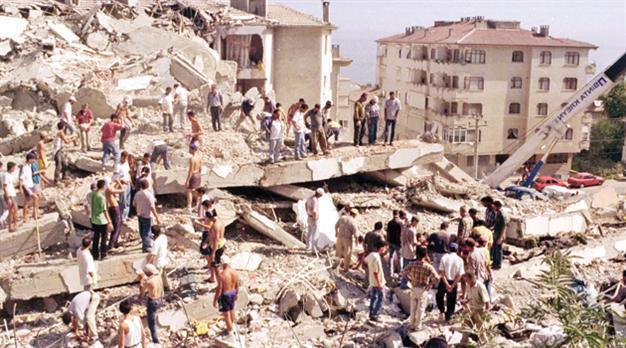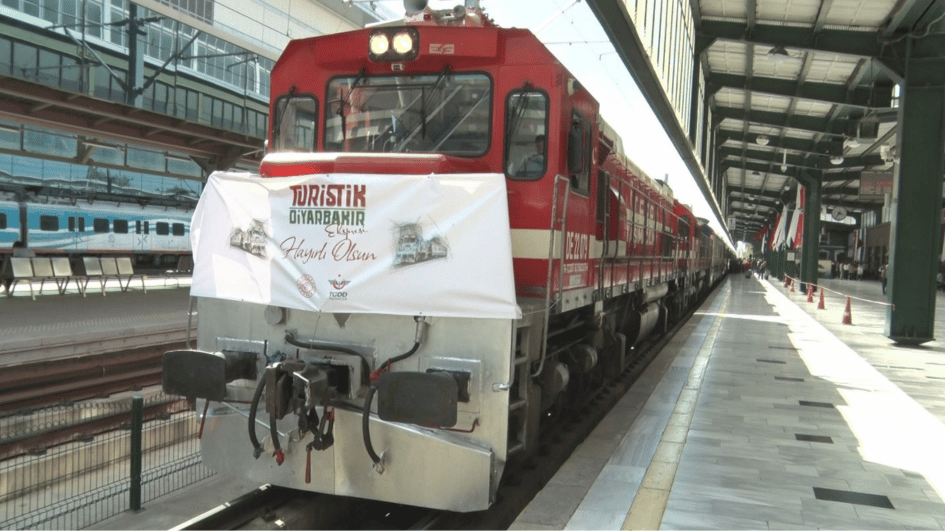Buildings on deadly plain creates dispute in Turkey
YALOVA - Radikal

A major earthquake hit many buildings and killed 2,000 people in Yalova in 1999.
The Turkish Housing Development Administration’s (TOKİ) construction works on Hacı Mehmet Plain, where most of the buildings collapsed after Marmara Earthquake on Aug. 17, 1999, has created new controversy.The General Directorate of Disaster Affairs introduced a limit of two stories at the most to new buildings, giving the area the status of a “Precaution Conditional Area.” The area has been commonly known as the “death plain” after about 2,000 people were killed under the wreckage in 1999.
TOKİ made its own zoning plan and started to build four-storey buildings in 2006. In 2008, the construction of 1152 houses was completed and they were delivered to the title holders. Following the TOKİ buildings, the area became very popular within the construction sector, and the municipality made two alterations in order to make the area more attractive for investors. The storey limit was increased from two to three, and the plain was turned from a “low density” to “medium density” housing zone in construction plans. The “death plain” was thus gradually turned into a building site.
Geophysics Engineer Prof. Ahmet Ercan has criticized TOKİ for building thousands of houses on a plain that had previously been devastated by an earthquake. “If an area experienced a disaster before, it should be defined as a construction-prohibited zone. This area, which was full of fig trees in 1985, was opened to construction in 1987. And it was completely destroyed with the Gölcük earthquake. Construction within the zone must be banned and the area should instead be used as a recreational green area,” Ercan said.
The plain is currently re-experiencing incidents of 1980s. After a long dispute, the swampy area on the plain was drained and it was opened to construction with permission from the municipal council in 1986. The land drew the interest of building contractors and it turned into a mass housing area with luxurious five storey buildings in a short space of time. On the “death plain,” which became the most disputed area after the earthquake, about 100 people were killed after the luxury sites named Mesa 1 and Mesa 2 collapsed. After the 1999 earthquake, over 1,000 people on the plain were trapped under the wreckage.
Some 10 years after the earthquake, Yalova Municipality increased the storey limit in the area to three. Regardless of the changing conditions of the 1/25000 zoning plan, the plain was unlawfully turned from a “low density” to a “medium density” housing area on 1/1000 and 1/5000 zoning plans.
In 2011, the plain was turned into a “medium density” housing area on 1/25000 upper scale plan with the approval of the Municipality and City Council. Yalova Deputy Mayor Ahmet Özsümer praises the fact that the plain has been turned into a building site. “[The area] has not been used since the earthquake, it was a place where people even hesitated to walk. But now it is the fastest developing neighborhood of Yalova,” Özsümer said.
“The limitation to low density and two storey buildings used to prevent investors from making plans about the plain. It was not rentable, no one was interested in the area. In 2009, only TOKİ was here, and there were about 3,000 inhabitants. The construction sector then came to the area, and I guess the population of the area has increased 50 percent. Nice three storey buildings were constructed. We have done what was necessary to be done here,” Özsümer said.
However, Chamber of Geological Engineers Yalova Representative from the Union of Chambers of Turkish Engineers and Architects (TMMOB) Özgür Bayraktar, said it was wrong and dangerous to restart construction in the area. “This area is a swamp. The ground is not safe. After the 1999 earthquake, 80 to 90 percent of this plain was destroyed. It is a great mistake to open this area to construction. In Turkey, building controls are problematic, and TOKİ gets its own license by the operation of law.”
In a statement issued on the constructions made on the plain, TOKİ said it had built very safe buildings in the area, with 11 meters long stakes.
















